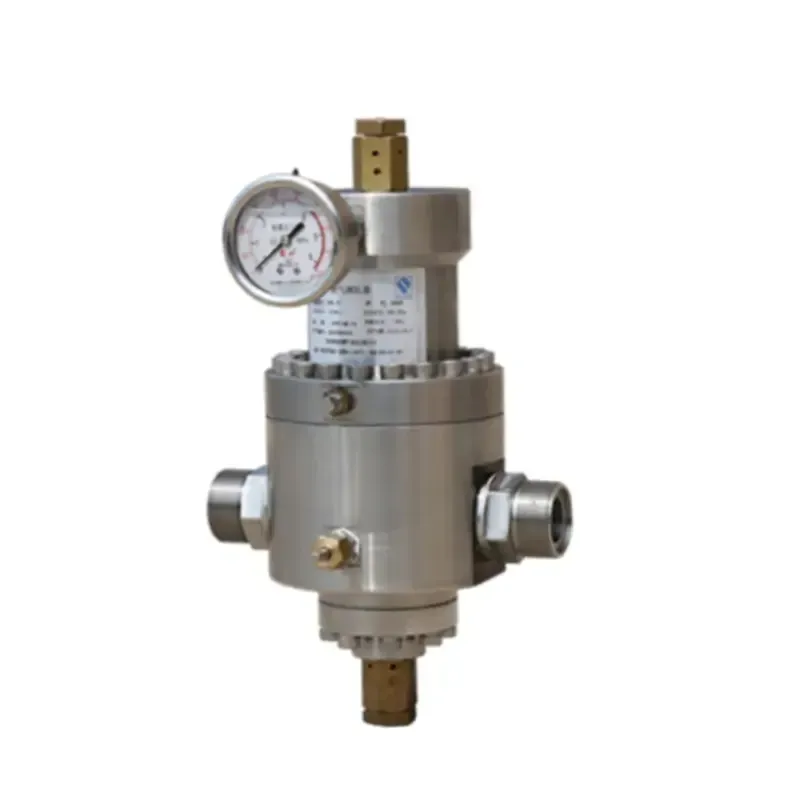
Nov . 24, 2024 13:26
Back to list
Electric Control Valve for Optimal Fluid Regulation and System Efficiency
Understanding Electric Regulating Valves A Key Component in Modern Control Systems
Electric regulating valves play a vital role in various industrial and commercial applications, serving as crucial components in fluid control systems. These valves are designed to regulate the flow and pressure of fluids, such as water, oil, and gas, within a system. By automating the control process, electric regulating valves provide precise adjustments that improve efficiency, safety, and reliability in operations.
What is an Electric Regulating Valve?
An electric regulating valve combines mechanical valve functionality with electric actuation. Typically comprised of a valve body, a stem, and an electric actuator, the valve can be opened or closed to varying degrees in response to electronic signals – often from a control system or a programmable logic controller (PLC). This capability allows for better control over the flow rates and pressure levels in a pipeline or a process system.
How Do Electric Regulating Valves Work?
The operation of an electric regulating valve hinges on the interaction between the valve seat and the actuator. The actuator receives signals from a control system, interpreting the desired set point for flow or pressure. Based on this information, the actuator adjusts the position of the valve stem, thereby regulating the fluid flow through the valve.
Electronics are integral in providing feedback mechanisms. These mechanisms can include position sensors that ensure the valve is functioning as intended. Depending on the application, electric regulating valves can be linear or rotary types, supporting varying flow characteristics.
Applications of Electric Regulating Valves
Electric regulating valves are instrumental in various sectors, including
1. Water Treatment Plants They manage the flow of water through different stages of treatment, ensuring optimal conditions for purification and distribution.
electric regulating valve

3. Chemical Processing They are essential in controlling the flow of corrosive or hazardous materials, ensuring safety and compliance with regulations.
4. Oil and Gas Industry Electric valves control the flow of crude oil and natural gas in pipelines, enhancing overall operational efficiency.
5. Food and Beverage In this industry, maintaining precise temperature and pressure is critical for product quality; electric regulating valves help achieve this by ensuring accurate flow control.
Advantages of Electric Regulating Valves
1. Precision Control Unlike manually operated valves, electric regulating valves provide higher precision and can be adjusted to very specific flow rates and pressures.
2. Automation Compatibility They easily integrate into automated control systems, allowing for remote operation and monitoring, resulting in reduced labor costs and increased operational safety.
3. Energy Efficiency By optimizing flow rates and minimizing wastage, these valves contribute to lower energy consumption, enhancing sustainability efforts.
4. Speed of Response Electric actuators provide rapid opening and closing, allowing for swift adjustments to changing system conditions.
5. Reduced Maintenance Needs With fewer mechanical parts than traditional valves, electric regulating valves often require less maintenance and have longer operational lifespans.
Conclusion
In summary, electric regulating valves represent a significant advancement in fluid control technologies. Their ability to provide precise control, integrate with automated systems, and enhance operational efficiency makes them indispensable in today’s industrial landscape. As industries increasingly lean towards automation and smart technologies, the importance of electric regulating valves will continue to grow, shaping the future of fluid management and control systems.
Latest news
-
Safety Valve Spring-Loaded Design Overpressure ProtectionNewsJul.25,2025
-
Precision Voltage Regulator AC5 Accuracy Grade PerformanceNewsJul.25,2025
-
Natural Gas Pressure Regulating Skid Industrial Pipeline ApplicationsNewsJul.25,2025
-
Natural Gas Filter Stainless Steel Mesh Element DesignNewsJul.25,2025
-
Gas Pressure Regulator Valve Direct-Acting Spring-Loaded DesignNewsJul.25,2025
-
Decompression Equipment Multi-Stage Heat Exchange System DesignNewsJul.25,2025

